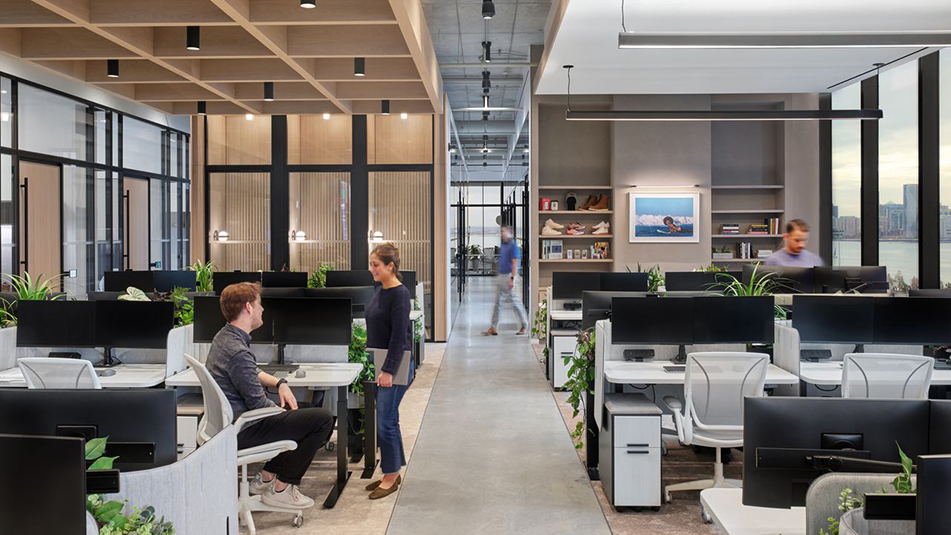Conversations with Cohen - The Right Tech Plan for Your Business
By now most businesses have mapped out their return to office plan, and whether that reflects a remote work model or a full return to the office, occupiers should take a closer look at their technology solutions for both scenarios. I spoke with Chris Smith, CEO of Cloud9 Smart, to get his take on key considerations for outfitting your business with the right tools for moving forward.

What Drives Your Technology Plan?
No matter what your chosen staffing model is, companies both big and small will need to evaluate their tech needs across the board. But where should they start? Smith suggests taking stock in these key factors that will drive your technology spectrum:
- How many people will be in the office vs. how many will work remotely
- The key functions of individual teams/employees and where they intersect
- Your team’s meeting rhythms
- How your staff interacts with each other and clients
- Whether you are modifying existing space or moving into new space
Knowing What You Don’t Know
Decisions around a company’s tech needs shouldn’t be limited to certain decision makers. Smith points out the importance of understanding how all teams use technology and factor that into the equation. “Sometimes it's the CEO of the company who's that deeply involved, sometimes it's a CFO and they're only thinking about the dollars and cents, but they're not thinking about the practical reality of how people are using space.” Involving your technology partner early and often in the process is critical. “You're going to want to pull a technology consultant into that process so that the tenant knows what to ask of the person leasing the space,” says Smith.
Work from Home Realities
Innovations in tech have gifted us the amazing ability to do business anytime, anywhere and it can’t be denied how valuable that is. However, recent conversations around work from home has shifted. It’s now focused on addressing the potential challenges. One such challenge Smith cites is that working remotely takes a different skillset and a lot of discipline, so it may need to be taught. “Waking up at the same time, getting dressed, taking a shower, showing up to the place where you decide to work for the day and being dedicated and focused, is completely different than when you're sitting in the office.” Cloud9 Smart offers a course called Decentralizing Your Workforce that covers not just remote work software tools, but processes and lifestyle choices associated with remote work. Lack of collaboration, digital meeting fatigue and the inherent limits of home technology should also be looked at closely when measuring the productivity and well-being of your staff. Smith concludes that “the health of an employee is multifaceted and very important to the longevity of the business.”
The Right Tools for the Job
In closing, below is a round-up of some of Chris’s recommendations for ensuring your tech plan meets the needs of both your remote and in-office workforce:
- Wireless systems will exist in your office space, but there will have to be a physical wired infrastructure to make the wireless reliable. Run extra wires for extra access points up front even if you don’t use them right away. Initial Installation costs are low relative to the cost of fixing it later on once you are in the space.
- Look for overlap in your software packages for cost savings. For instance, if you’re running Microsoft Office 365, you already have access to Microsoft Teams. If that digital conference solution works for you, you may not need a Zoom subscription also.
- Tools like Slack and Microsoft Teams offer options for informal communication when an impromptu face-to-face meeting isn’t possible.
- Understand the limitations—and possibilities—of certain software packages. You may be limited by the number of seats or licenses your budget can accommodate. On the flip side, some tools offer extensions for webinars, calendar coordination or CRM integrations. It’s important to compare the full spectrum with your business needs.
- Don’t just settle on any camera for video meetings. There are cameras that range in price from $200 to $1000 and beyond. Consider the higher end solutions if you are hosting webinars or pitching business. If you’re only tasked with joining someone else’s meetings, a $100 webcam is probably fine.
- Don’t ignore your audio needs. Are you working somewhere with a lot of ambient noise? Are you comfortable wearing a headset on camera? Ask yourself these questions to inform your plan on audio.
----
Click here for the full interview with Chris Smith of Cloud9 Smart



